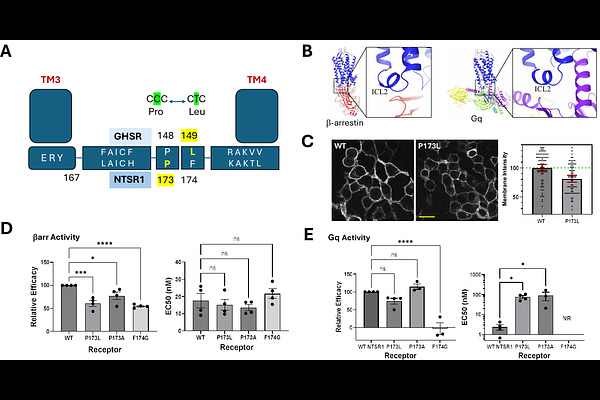Hidden Bias: GPCR Polymorphisms and the Genomic Landscape of β- Arrestin Signaling

Hidden Bias: GPCR Polymorphisms and the Genomic Landscape of β- Arrestin Signaling
Zhou, Y.; Sozat, A. K.; Wetsel, W. C.; Slosky, L.; Gross, J.; Barak, L. S.
AbstractClinically, no human diseases are currently diagnosed as being directly driven by {beta}-arrestins. Nonetheless, there is growing interest in developing {beta}-arrestin biased drugs, due to the key regulatory role of {beta}-arrestins in modulating the cellular signaling of most G protein-coupled receptors (GPCRs). In cell-based studies of rhodopsin-family GPCRs, mutations in a conserved proline-hydrophobic (ProH) motif within the second intracellular loop (ICL2) have been shown to alter{beta}-arrestin signaling bias. The clinical relevance of such mutations in humans is unknown. However, if naturally occurring single nucleotide polymorphisms (SNPs) affecting this ProH motif exist across the GPCR family, then cross- referencing these genetic variants with large-scale population sequencing and epidemiologic data could reveal potential roles for {beta}-arrestin signaling in human health. In this report, we identify SNPs in human GPCRs that correspond to ProH substitutions, and we show that, in the neurotensin receptor NTSR1, these variants can indeed shift signaling bias. We also estimate a lower-bound population frequency for such SNPs, suggesting that although rare for any given receptor, their cumulative prevalence across the GPCR superfamily may be large enough to impact phenotypic variation. Together with emerging data from biased ligands, our findings support the idea that genetic variations in {beta}-arrestin signaling could represent a meaningful source of therapeutic relevance